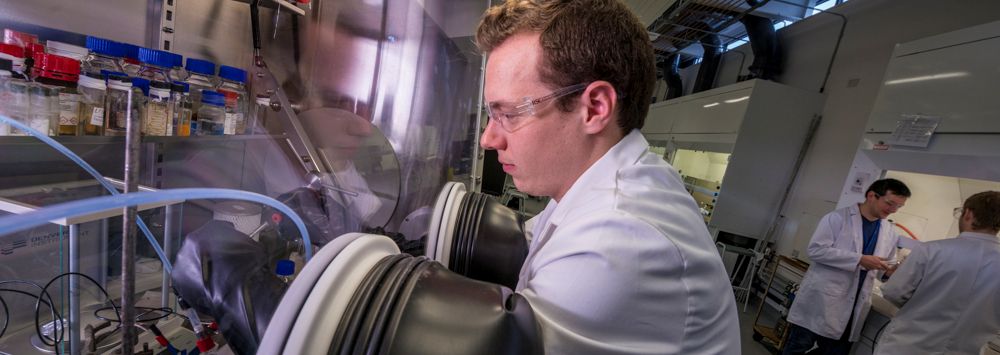
Energy Storage
Batteries (Lithium and Sodium)
Hydrogen storage (hydrocarbon conversion)
Heat storage (encapsulation/phase change)
Batteries (Lithium and Sodium)
We have built up significant knowledge on teh degradation and ageing processess of lithium-ion batteries, which limit their efficiency and life. We are also developing new high energy storage battery technologies, such as lithium-oxygen batteries.
Improvements to existing battery systems and the testing of new components and chemistries, such as sodium based, for energy storage can be applied in consumer electronics, electric vehicles and stationary power back-up.
You can find out more at our SIRBATT (Stable Interfaces for Rechargeable Batteries) pages.
Back to top
Hydrogen Storage (Hydrocarbon Conversion)
The selective, catalytic functionalisation of hydrocarbons has great potential for clean and energy-efficient generation of value-added chemicals and fuels. The realisation of this potential relies on the development of more selective and active catalysts for activation of C-H and C-C bonds in hydrocarbons.
The Institute’s research focuses on the rational design of soluble metal catalysts for selective transformations of C-C bonds in aliphatic and aromatic hydrocarbons. The design of the catalysts is based on mechanistic studies of C-H and C-C bond scissions mediated by well-defined transition metal complexes.
Heat Storage (Encapsulation/Phase Change)
New technologies for energy generation, storage and delivery require additional efforts in the investigation of new materials for energy systems. Corresponding materials have to provide high storage capacity, safety, and be cheap and reusable. The application of such materials is very broad: from heat capacitors for low-energy houses to hydrogen storage tanks.
Our research focuses on development of nanoencapsulation technologies for novel generation of energy storage and delivery systems. These systems are based on the “smart” nanocapsules (size below 200 nm) loaded with the energy-enriched active components. The central function of the nanostructured capsule shell is the protection of the encapsulated energy-enriched materials and controlled release of energy.